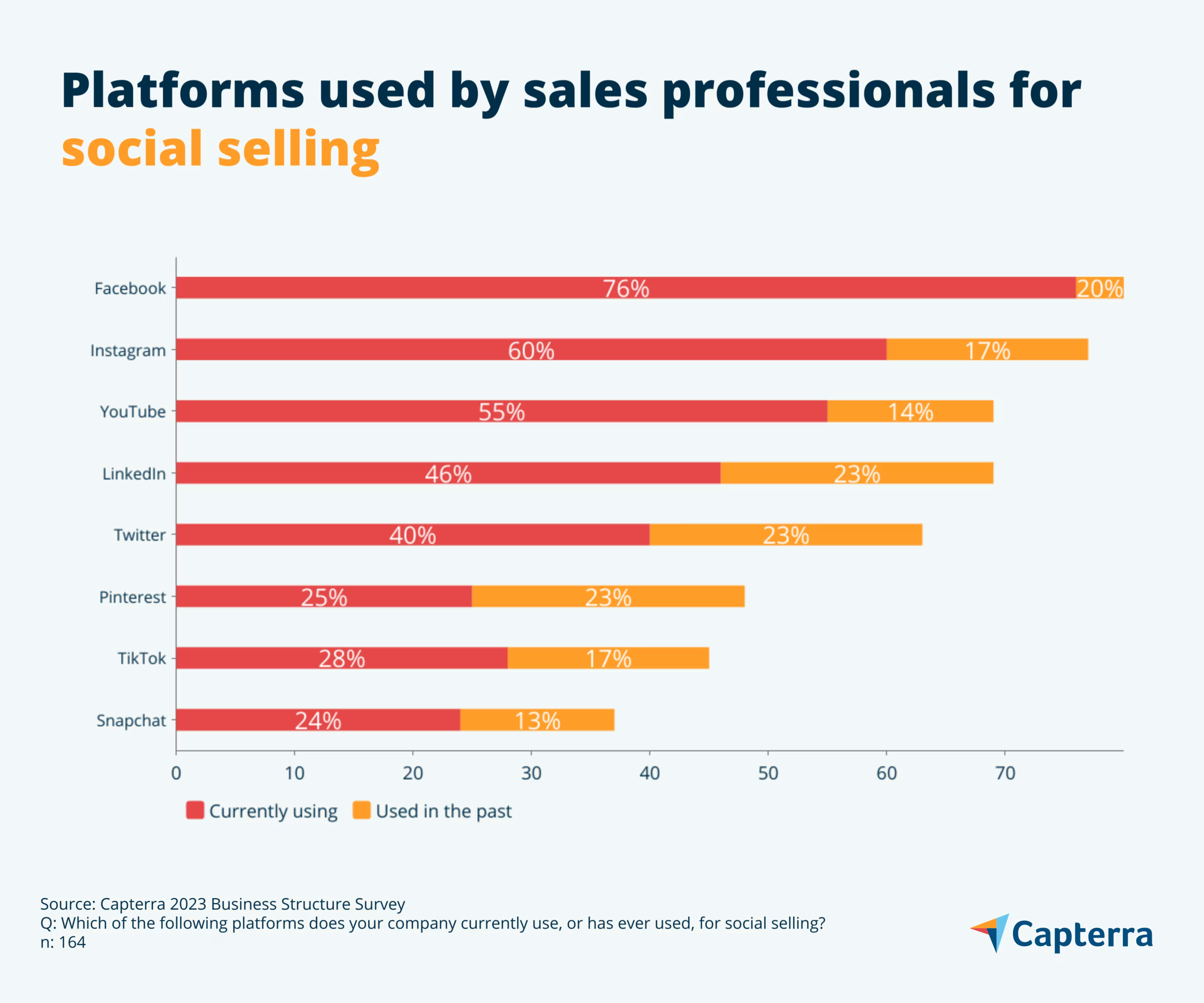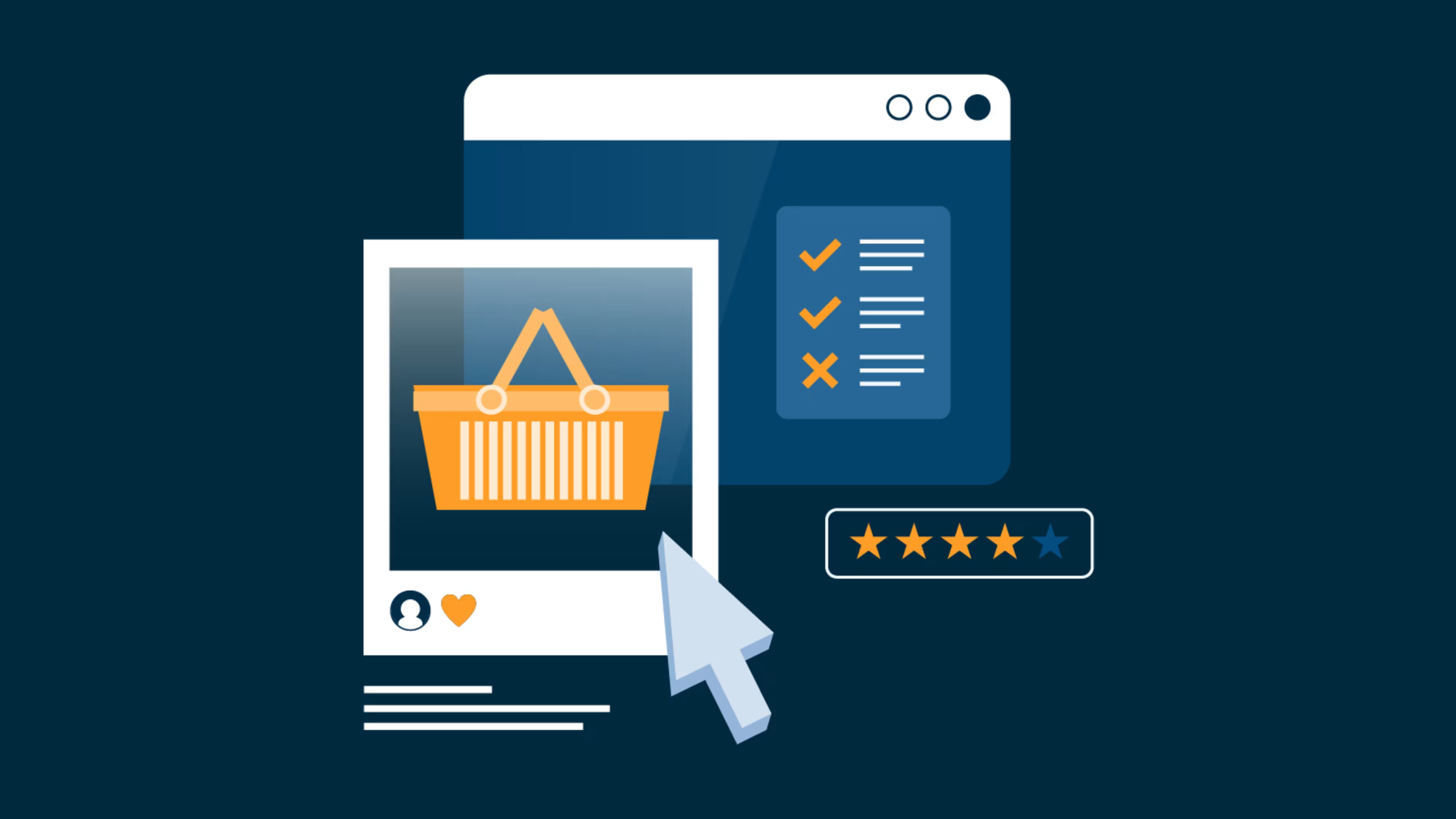Social selling isn't meant to be a quick fix to boost revenue. The goal is to connect with customers for the long haul.
Social selling is one of the top customer acquisition methods used today, with over 80% of sales professionals saying it's effective for their organization in a recent Capterra survey*. But the term is a misnomer: Social selling isn't about selling at all, nor is it meant to be a quick fix to boost revenue or promote your brand.
Social selling is about being in it for the long haul with your customer base, with connection and helpfulness as your goals. To get some expert advice, we spoke to Thomas Ross[1], founder of Social Selling Headquarters, a social sales training startup for sales and marketing professionals. Ross shares four tips for sales professionals who are ready to try social selling for the first time.
"When people want answers, they go online. Not to be sold, but to research."


Thomas Ross
Founder of Social Selling Headquarters[1]
Tip #1: Identify the best social media channel for your business
Ross's first tip to jumpstart your social selling strategy is to identify social media platforms where your target audience is most concentrated: "If you knew all the fish you ever wanted to catch were in one specific lake, would you bother fishing in any other lake?"
The best platform for your business will vary depending on your industry and the demographics you serve. For example, if you're a business-to-business (B2B) brand, LinkedIn may be your best bet, but if your offerings are geared toward a younger crowd, you might focus on TikTok.
The chart below provides a breakdown of social media platforms used by sales professionals who participated in our 2023 Business Structure Survey*. More than three quarters (76%) of respondents say they currently use Facebook for social selling, which could be due to its ability to seamlessly integrate with Instagram, the second most popular social platform.

While it's tempting to stick to the social platform(s) you're most comfortable with, Ross urges social sellers participating in his training program to set aside their biases. "It's not about you, it's about your customers. If they're primarily on LinkedIn, for example, then that's what you should focus on."
You can find out which platforms your customers prefer through surveys or by creating customer personas. Once you've identified the best platform for your social selling efforts, leverage that platform’s features to connect with prospects. Below are a few examples of what this may look like:
LinkedIn: Look for prospects with first-degree, second-degree, or third-degree connections[2], and strike up a conversation using that connection as an icebreaker.
Instagram: Share tagged content in your stories to show how followers are using your products or services.
Twitter: Determine which hashtags best represent your business so your target audience can find your content.
Facebook: Engage with customers in comment threads.
/ Tech spotlight
If you're not sure which social media platforms to focus on, social selling software can offer insights. Its tracking and reporting features show you the number of leads your brand has been able to generate and convert through each channel. Click here for some free options.
Tip #2: Listen strategically to identify leads and opportunities for engagement
Ross's second tip emphasizes the importance of social listening—i.e., the practice of monitoring social media channels for mentions of your brand, competitor brands, and related keywords. "It's our job to listen," explains Ross. "Your customers are online chatting, talking, and commenting on everything, including the solutions you can provide. Why chase leads with cold calls and emails when you can actively talk to people already discussing your industry and solutions?"
Social listening is one of the easiest ways to boost your social selling strategy because you're leveraging the fact that people on social media platforms are already talking about your industry or your business. They could be sharing positive things, posting negative feedback, or discussing unaddressed challenges and market opportunities.
Each social channel has its own tools to listen to these conversations, get strategic insights out of them, and identify and engage with leads:
Platform | Platform-specific tool | Description |
|---|---|---|
Allows you to monitor lead activity and engage with accounts most linked with your company's network. Also lets you leverage account-based marketing for targeted campaigns and engagement. | ||
Facebook and Instagram | Tracks engagement and provides insights that you can use to improve your social selling strategy, such as the best time of the day to post content. | |
Shows how your audience is responding to your content and helps optimize future Twitter campaigns. |
It's also possible to implement social listening without using analytics tools. If your client base is primarily local, for instance, monitor neighborhood Facebook groups and websites such as Nextdoor to read what people are saying and engage with those users. Knowing what your customers are talking about can help you create more helpful content for them—more on that in our next tip.
/ Tech spotlight
For platform-agnostic tools that allow you to monitor conversations on social media, check out our collection of social listening tools. These tools can help you track, gather, and analyze conversations about your brand, competitors, or new market trends across social media channels, review platforms, and the web. Click here for tools that offer a free trial.
Tip #3: Create helpful content based on your customers' needs
Ross's third tip emphasizes the importance of helpfulness over making a sale: "When people want answers, they go online. Not to be sold, but to research."
Creating relevant content builds trust in your brand as well as your credibility as a sales rep. It also provides value to a potential customer who is researching options before making a purchase decision. The profile below is an example of a small-business owner who used social selling to meet a particular need her customers had during the COVID-19 pandemic.
Social selling success story: Pat Bennett of Pat's Granola
Pat Bennett[3] first tried social selling for her business, Pat's Granola, in the spring of 2020. A mother herself, she realized that parents of school-aged children could use some new and creative ways to nourish their families who were suddenly spending more time at home.

Screenshot from Bennett's Instagram taken by author[4]
To meet this need, she created short cooking and food preparation videos for Instagram and Facebook. The response to her content was overwhelmingly positive—with 60% of her posts saved and reposted—and even led to partnerships with other local businesses and restaurants.
Bennett's success didn't happen overnight: "It took me a few months to build up views and shares as I was cultivating relationships with followers—using hashtags that reflected my brand, identifying targeted prospects, and responding to comments on other feeds," she says.
"This is a long game, and users should expect to devote a fair amount of time analyzing other feeds, when users respond to posts, as well as the best time to post. The more you post, the faster you can expect to grow followers."
What else can helpful content look like?
Sharing relevant articles or studies about your industry.
Addressing commonly asked questions.
Sharing relevant information on your social media networks to establish yourself as an expert, if you're B2B. You can even use LinkedIn's publishing platform[5] to write your own articles that are relevant to your industry.
Tip #4: Track results and make adjustments
Ross's final tip is to track results and make adjustments. This way, you can know which parts of your social selling strategy are working and which aren't, and make changes accordingly. The following tech tools can help:
Social selling software, as we mentioned earlier, allows you to set indicators to track and measure how your online marketing campaigns are performing.
Social media marketing software can automate the tracking of your online campaigns.
Social media analytics tools identify trends, generate reports, calculate social media ROI, and analyze post-publishing statistics.
Customer relationship management software, otherwise known as CRM, helps you keep customer information, such as social media handles, in one centralized database.
Data discovery software allows you to collect, evaluate, and visualize data from all of your social media channels.
As for what metrics or key performance indicators (KPIs) you should track, Ross recommends:
Social selling index: A metric created by LinkedIn to quantify the value of your social selling efforts.
Engagement: Likes, comments, shares, direct messages, and follows.
Reach: How many users viewed your post or story or followed your hashtag.
Conversion rate: The percentage of users who have completed a desired action, whether that's signing up for your email list or making a purchase.
You can also track your number of connections, followers, articles or blog posts published, and online events. Anything that contributes to the success of your brand is worth tracking. "If you don't measure it, don't bother doing it," says Ross.
Consistency is key to successful social selling
Ross offers the following parting advice: "Don't stop. Keep it up, and continue to build your organic reach and online presence. The moment you stop is the moment it can all begin to fade away."
As your business grows, you might need assistance with your social selling strategy to maintain consistency in posting, engaging, and performance tracking. A social media marketing agency can help you track trends as well as the likes, dislikes, and interests of your target audience so you can create a social media marketing strategy based on this information.
Interested to know what other services Capterra offers? Click here for more information.
